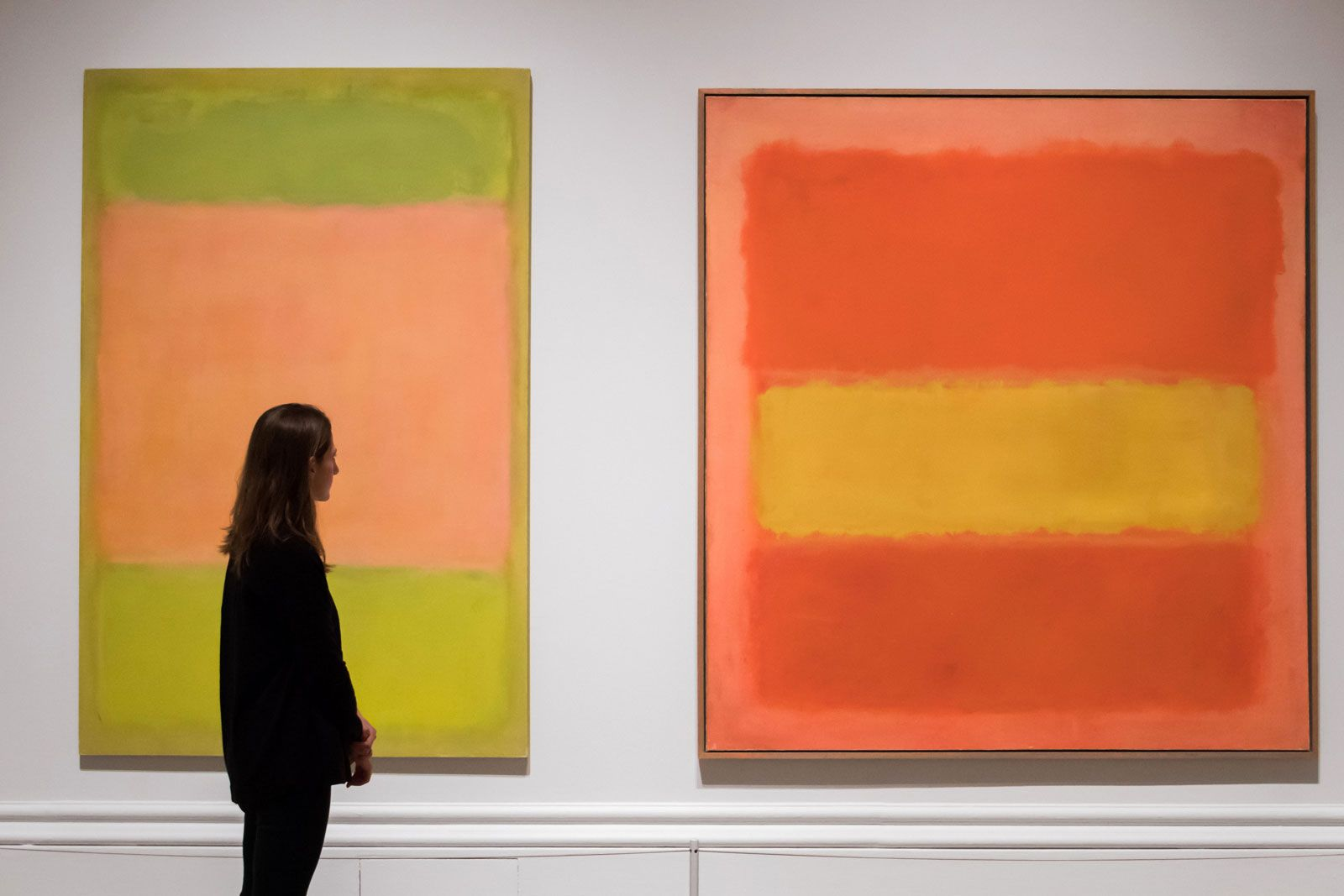Canvas of Human Emotion - Mark Rothko
As we continue to explore the work of our favorite modern artists, we find inspiration in Mark Rothko’s richly transportive expressions. His artworks are imbued with feeling and often evoke emotional responses in those who view them. We feel a connection with this aesthetic goal, as we approach all of our own designs with a focus on creating sensory experiences and moments of awe.
Photo from brittanica.com
Born Marcus Rothkowitz in Dvinsk, Russia, Mark Rothko emigrated to the United States with his family as a child. After dropping out of Yale at the end of his sophomore year, he discovered the art world when visiting a friend who was attending art school at The Art Students League of New York. Rothko enrolled there as well, where he studied under Max Weber, and he also attended Parsons The New School For Design, where he studied under Arshile Gorky. His definitive artistic style emerged in the post World War II 1940s and 50s in New York City, as the abstract expressionist movement was born, and New York became the capital of the art world. Alongside Jackson Pollock, Willem de Kooning, and others in the avant garde community, Mark Rothko was an important part of the new American modern art.
Surrealism, Cubism, and earlier abstract works like those from Wassily Kandinsky appear as influences in Rothko’s early art. As he explored ancient mythology, modern psychology, and symbolism, however, his work became less and less figurative, and more and more abstract, until it was totally distilled into spiritual experience and pure emotion, via color.
Photo from nga.gov
Photo from nga.gov
Photo from nga.gov
Photo from nga.gov
His oversized canvases gently pulse with colors that contract, expand, hover, push and pull against one another and the viewer. The colors advance and recede like tides coming and going, and the soft edges of the squares breathe and overflow their modernist lines. Believing that figurative images got in the way of experiencing a transcendence possible through image-less art, Rothko continued to create what became known as Color Field Paintings until the end of his life.
Photo from Pinterest
Photo from Yale University Art Gallery
In Seldon Rodman’s ‘Conversations with Artists’ from 1956, Rothko said, “I’m interested only in expressing basic human emotions — tragedy, ecstasy, doom, and so on — and the fact that lots of people break down and cry when confronted with my pictures shows that I communicate those basic human emotions… The people who weep before my pictures are having the same religious experience I had when I painted them … “. It’s a feedback loop of feelings, and from seemingly dark and troubled, to light and ethereal, Rothko’s paintings convey a multitude of sensations.
Photo from nga.gov
Photo from nga.gov
He was extremely specific about how his artwork should be displayed, and desired to control how they were experienced in the world. He said, “A picture lives by companionship, expanding and quickening in the eyes of the sensitive observer. It dies by the same token. It is therefore a risky and unfeeling act to send it out into the world ...”. How pieces were displayed on walls and how they were lit were some of the details that he didn’t leave for others to decide. When he received a commission to paint a set of murals for the Four Seasons restaurant inside of New York’s Mies van der Rohe designed Seagram Building, he accepted.
Photo from Wikipedia
Photo from the nytimes.com
However, after starting work on the pieces he abruptly withdrew from the contract, gave the money back, and donated some of the dark and moody pieces to the Tate Museum instead. He would rather pay back the money, than allow his art to be used as ambiance and decoration in a playground for the ultra rich.
Photo from tate.org.uk
Photo from tate.org.uk
Photo from tate.org.uk
A commission that was more in line with his artistic ideals and spiritual aims, and what would become his last, was creating a series of pieces to hang in a non-denominational chapel to be built in Houston,Texas by the Menils, wealthy art patrons. In this spiritual setting his art would not be a backdrop, but the main focus, and serve as a doorway to inner journeys of contemplation and reflection.
Photo from artnews
Placed around the walls of the octagonal shaped structure, which Rothko helped to design, with benches facing them, 14 enormous canvases of dark bottomless deep color encircle the room. Light comes through a skylight overhead, and the environment is serene and quiet. Dominique Menil, one half of the patron couple said of Rothko’s work, reported in Art News, “Oh miracle, peace invaded me. I felt embraced, and free. Nothing was stopping my gaze. There was a beyond...”. Rothko once said that people should stand 18 inches away from his artwork, in order to feel like they were a part of it, not separate from it, and in this chapel one can truly be enveloped.
The Rothko Chapel opened in 1971, but without Rothko’s presence. He had committed suicide the year before. Today the chapel remains a modern art destination and site of pilgrimage for many. It was added to the National Register of Historic Places in 2000.
Photo from kvetchlandia
Images courtesy of Art News, NY Times, Nina Leen, The Tate Museum, MOMA, Life Magazine, Fans in a Flashbulb, National Gallery of Art, Yale University Art Gallery, Pinterest, Wikipedia, Getty Images, Justin Lorget, and Key Bell Reynal.
















